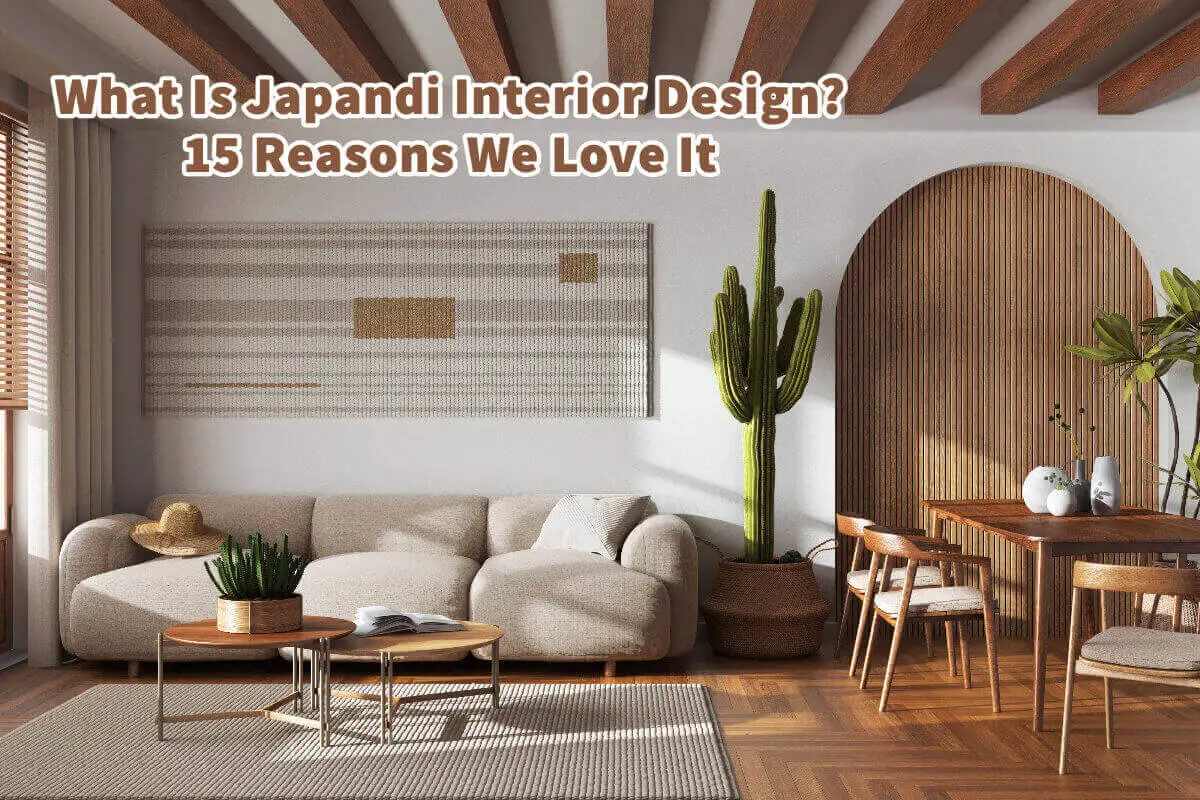Are you looking for a way to add an element of relaxed sophistication and timeless beauty to your living space? If so, then Japandi interior design may be just the style you are searching for.
The Japandi combines the best of Japanese minimalism with Scandinavian functionality; this fresh take on home decor has been gaining popularity here and abroad. The Japandi interior design trend perfectly merges the Japanese Wabi-Sabi style with the Danish Hygge Style. The Japandi direction has natural textures to its sleek silhouettes; there are many reasons why we can not get enough of the Japandi design trend. Read on to learn more about the Japandi interior design trend and 15 reasons why we love it.
Table of Contents
- What Is The Japandi Interior Design Style?
- 15 Reasons We Love The Japandi Interior Design Style
- Japandi Is About Beauty In The Imperfections
- Japandi Creates A Restful, Relaxing Space
- Japandi Is About Minimalism
- Japandi Uses Natural Elements
- Japandi Uses Greenery In The Interior Design
- Japandi Interior Design Trend Is About Quality Pieces
- Japandi Emphasis Function
- Japandi Is About Smart Storage Solutions
- Comfortable Furniture Is A Core Of The Japandi Design
- Japandi Incorporate Cozy Textures Into Your Design
- Neutral Colors Help Define Japandi Interior Design
- Simplicity In The Patterns With Japandi
- Imperfection Over Perfection For The Japandi Design
- Choose Natural Lighting For Your Japandi Design
- Japandi Use Some Japanese Accents
- Related Content
What Is The Japandi Interior Design Style?
Japandi is a style of interior design that combines the best elements of Japanese Wabi-Sabit designs and Scandinavian Danish Hygge styles. The Japandi interior design style uses natural materials, neutral colors, and minimalistic elements to create a calming space.
Traditional Japanese Wabi-Sabi design focuses on simplicity and incorporating nature into the home. Scandinavian designs are known for their emphasis on functionality and clean lines, and the Danish Hygge is about having a home that is comfortable and cozy. Japandi brings together these design styles to create a beautiful and practical interior.
This style is perfect for those who want a simple, calming home environment. Japandi’s interior design allows for clean lines and minimal furniture, creating an open, airy atmosphere.
Natural materials like wood, stone, and bamboo are often used to add texture and warmth. Neutral colors like white, black, and gray are also popular in Japandi design as they create a serene feeling. Incorporating plants into the home is a significant theme in this design style, as they bring life and energy into the space.
Ultimately, Japandi’s interior design combines Japanese and Scandinavian elements to create a beautiful, peaceful home environment. By blending natural materials and neutral colors with minimalistic furniture, you can create a stunning and calming space that you can enjoy for many years.
15 Reasons We Love The Japandi Interior Design Style
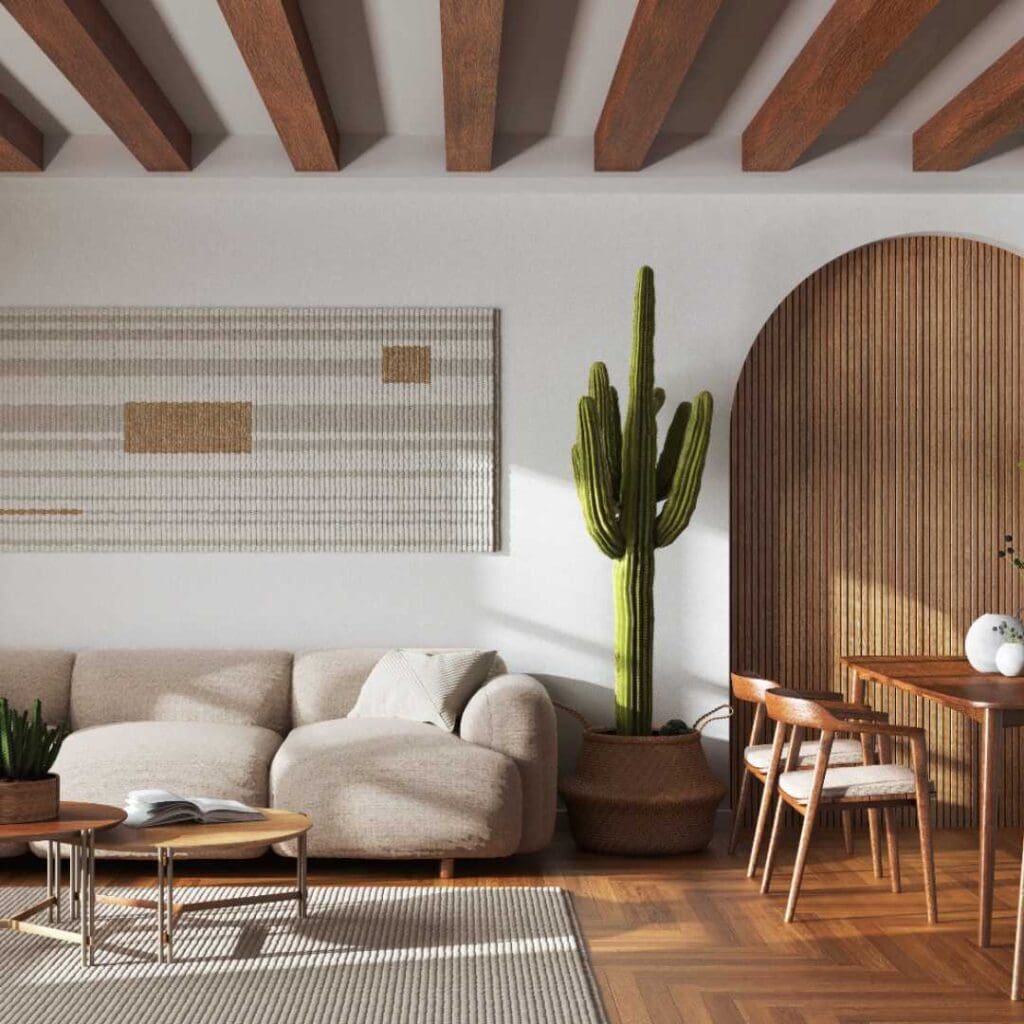
Japandi interior design is the perfect design style for today’s modern world. The Japandi designs combine the Japanese Wabi-Sabi style with the Danish Hygge style. We love many of the design features of the Japandi Interior design style.
Read on to discover our 15 key design features of the Japandi Interior Design style:
Japandi Is About Beauty In The Imperfections
A core belief about the Japandi trend is that there is beauty in imperfections. Not everything that you have in your home has to be perfect. Your furniture can be distressed.
You can also have things from nature and life that are not perfect. Organic shapes are essential, as are natural imperfections.
We love the Japandi interior design trend, as you can find beauty in the imperfections in life- after all, life is never perfect.
Japandi Creates A Restful, Relaxing Space
The Japandi trend also seeks to create a restful and relaxing interior space. One of the core beliefs of the Danish Hygge trend is that you want an interior space that is comfortable, relaxing, peaceful, and restful.
A home where you want to return to because you love to be home. It is a place that feels and looks comfortable.
We love an interior space like the Japandi interior style that is restful, peaceful, and relaxing.
Japandi Is About Minimalism
A vital feature of the Japandi style is minimalism and incorporating elements, such as clean lines, organic materials, and neutral colors, into the design trends. The Japandi design elements help to create a tranquil atmosphere in the interior space.
The other aspect of minimalism in the Japandi trend is to have a space that is not just tranquil but also modern and cozy. For this trend, having less is better than having more; it is a look that is the opposite of a cluttered space.
One of the things we love about the Japandi trend is that it is about minimalism and not having a house full of clutter.

Listen To Our Podcast Why Japandi Design Is Taking the Interior Design World by Storm below or by clicking here.
Japandi Uses Natural Elements
The Japnadi look also uses many natural materials, such as wood, stone, and others. Bamboo, rattan, and woven elements work well with this look and style.
The natural elements not only give you a feeling that you are living out in nature, such as a natural woven rug, distressed wood furniture (like our recycled pine furniture), stone, or even stone faux lamps and bowls.
We love a home that uses natural elements. One of our favorite design trends is using recycled or reclaimed wood to produce furniture. If you want to manufacture recycled pine furniture, you can read our blog about Recycled Pine Furniture, What You Need to Know by clicking here and contacting us by clicking here.
Japandi Uses Greenery In The Interior Design
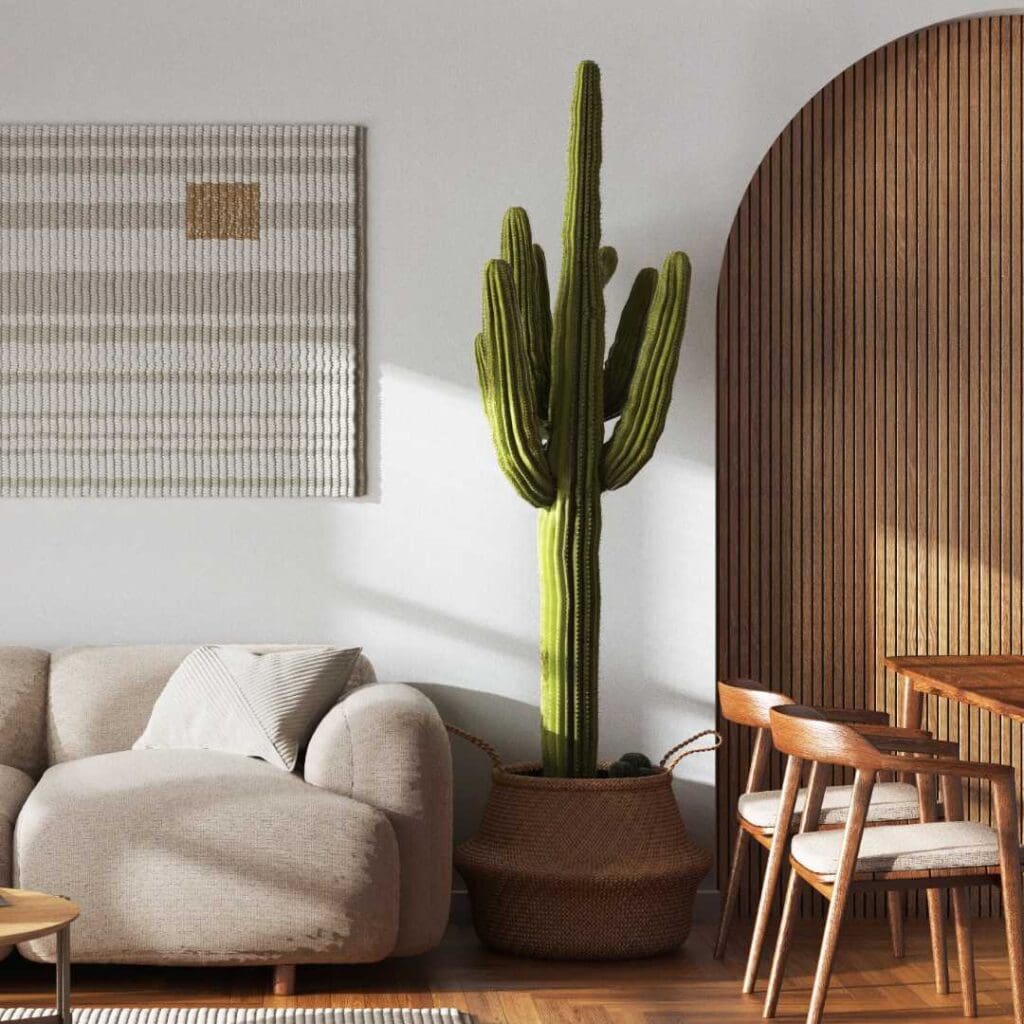
The Japandi look also includes some natural greenery; real plants, flowers, and other vegetation types will be strategically placed around the room to give the room a natural feel. The key here is to have real plants, not fake ones, in the interior space.
We love natural elements, such as bamboo. I love having fresh plants in my home; there is something about connecting with nature when you live with fresh plants.
Japandi Interior Design Trend Is About Quality Pieces
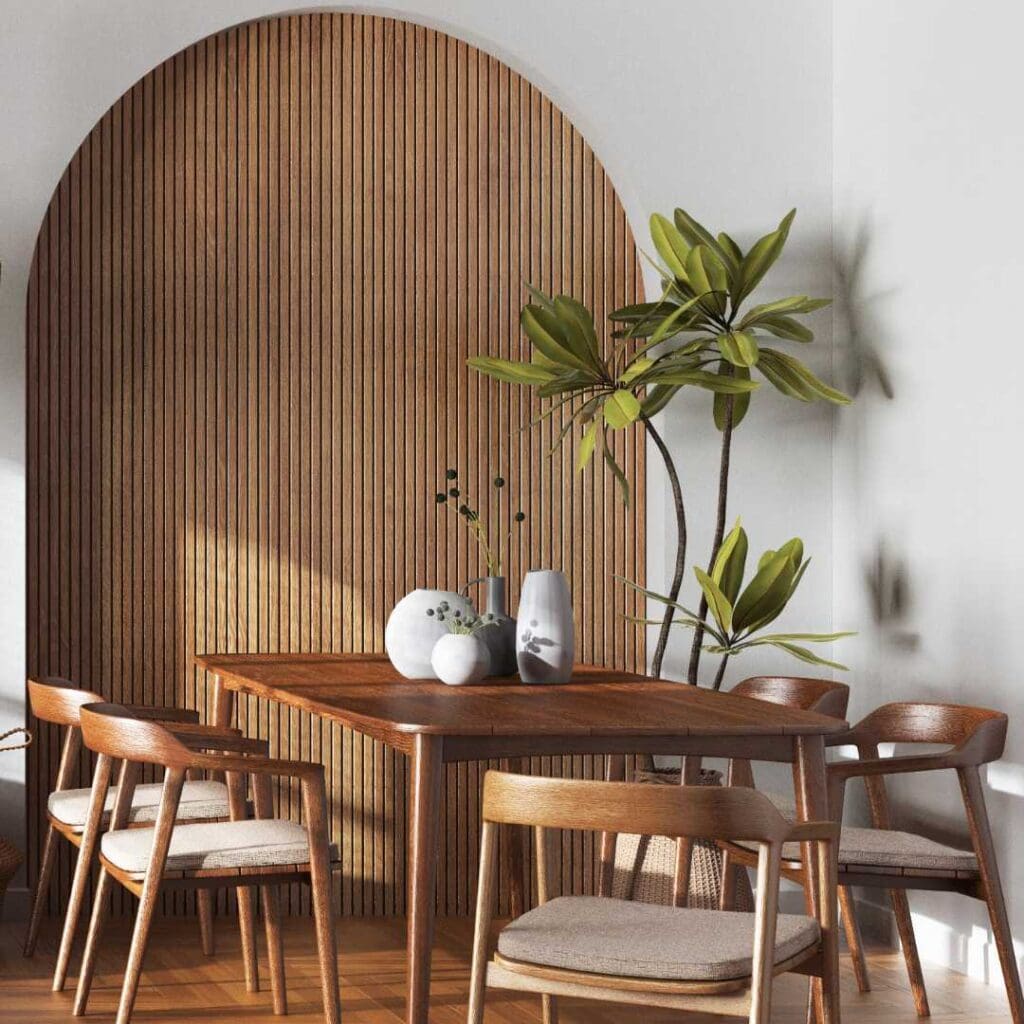
Japandi is about investing in quality furniture and other pieces in your home. It is about quality and not quantity.
If you can afford a good quantity of furniture, buy one piece that will last a long time. Good quality furniture is part of the minimalist lifestyle.
We love this aspect of having good quality furniture and items in your home; even if you have a few pieces, make sure they are quality.
Japandi Emphasis Function
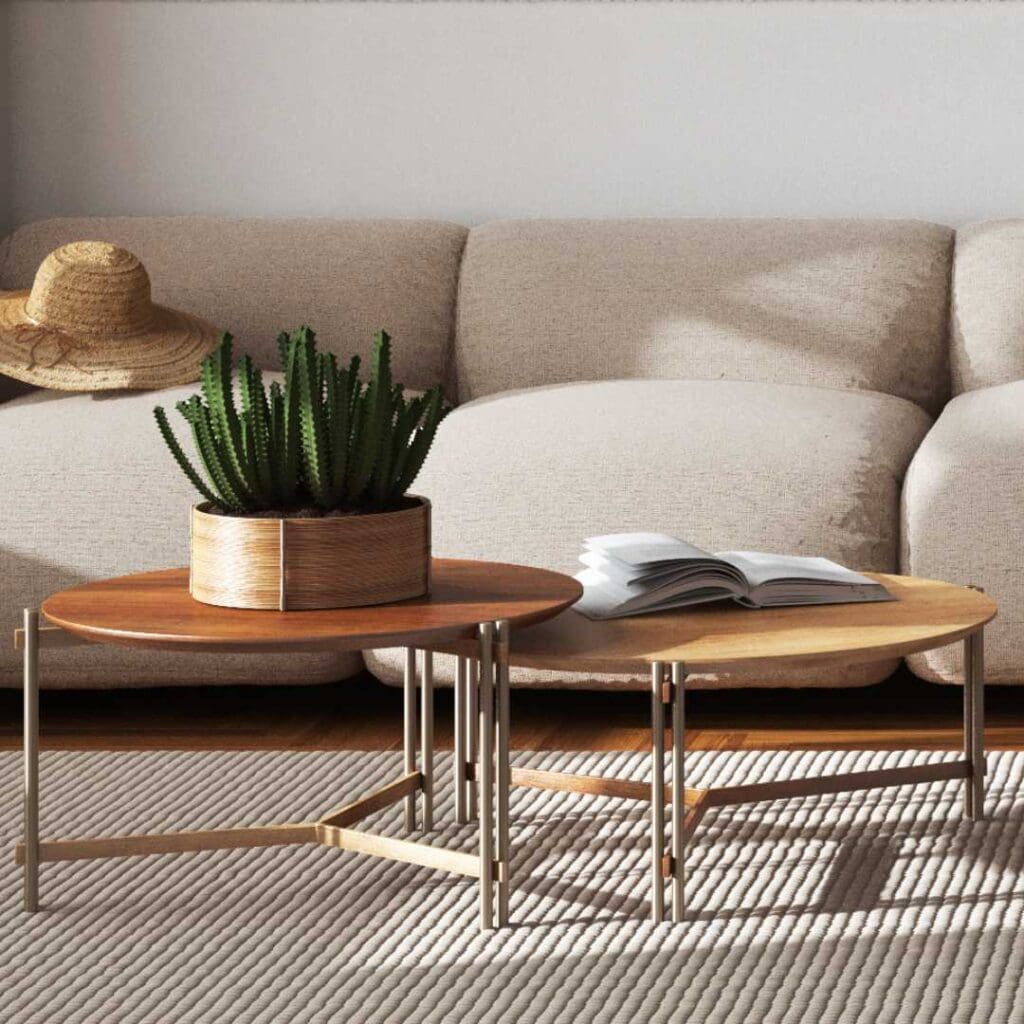
The Japandi interior design emphasizes the interior space’s function and functionality. Furniture, such as items with compartments, can help maximize the space and efficiency of the interior design.
Also, the entire room should be functional at the core of Japanese design. The interior space should be a room that can be warm and cozy while being practical and stylish at the same time.
We believe a home should be lived in and part of the house’s design. We love a home that is filled with function and style.
Japandi Is About Smart Storage Solutions
The Japandi trend also teaches us to look at intelligent storage solutions. In other words, it’s not about cluttering your house, but instead, for your home to have a place for everything and that you have proper storage for everything in it.
The Japandi style is the opposite of clutter and junk but is about everything having a proper place in your home and that you look at intelligent storage solutions for things in your home.
We love a home that has smart storage and is not filled with clutter; a home that is not filled with chaos is also a home that can give you peace and serenity.
Comfortable Furniture Is A Core Of The Japandi Design
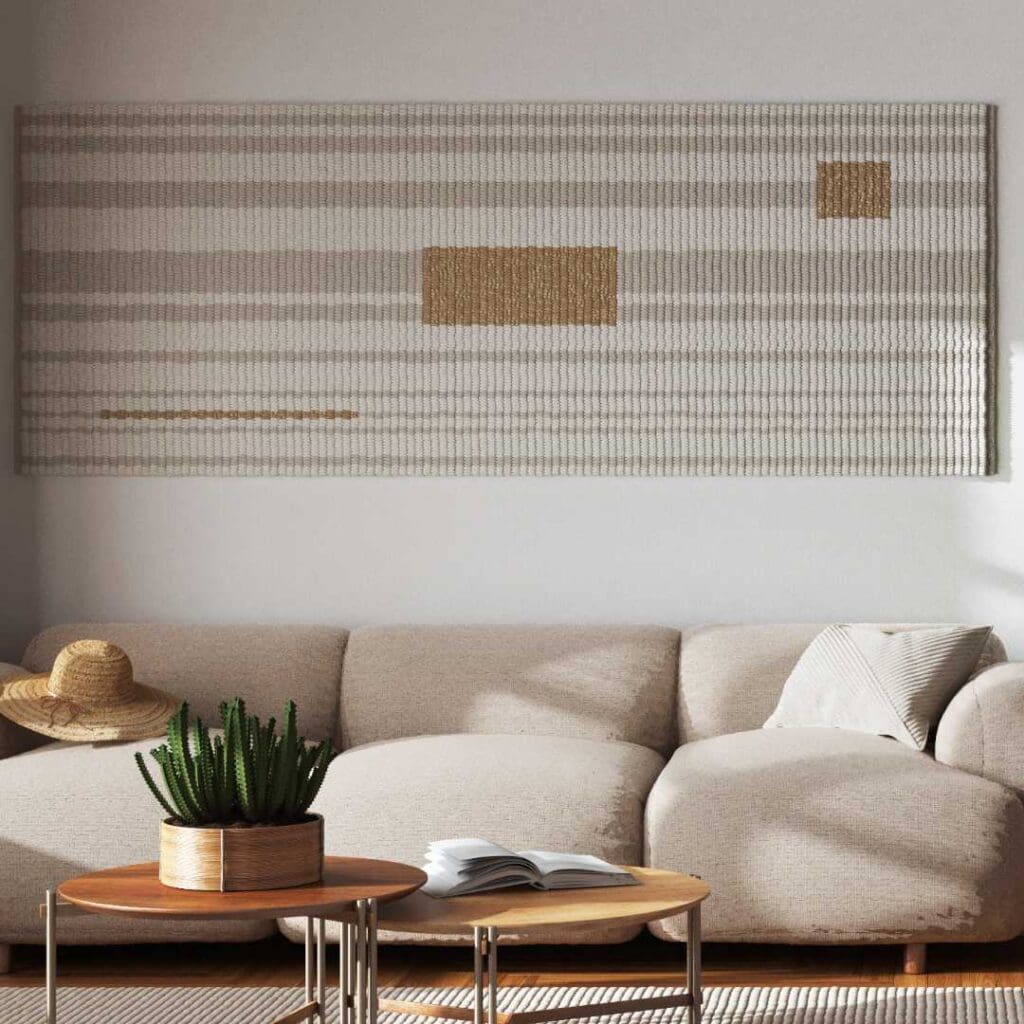
For the Japandi design, you want a home that you can feel comfortable returning to you after a long, stressful day. You want to have a home that is lived in and comfortable.
That is why, for the Japandi design, one of the core elements is having comfortable furniture. Something that you can enjoy and relax in after a long day’s work.
We love to live in a home filled with comfort, rest, and relaxation.
Japandi Incorporate Cozy Textures Into Your Design
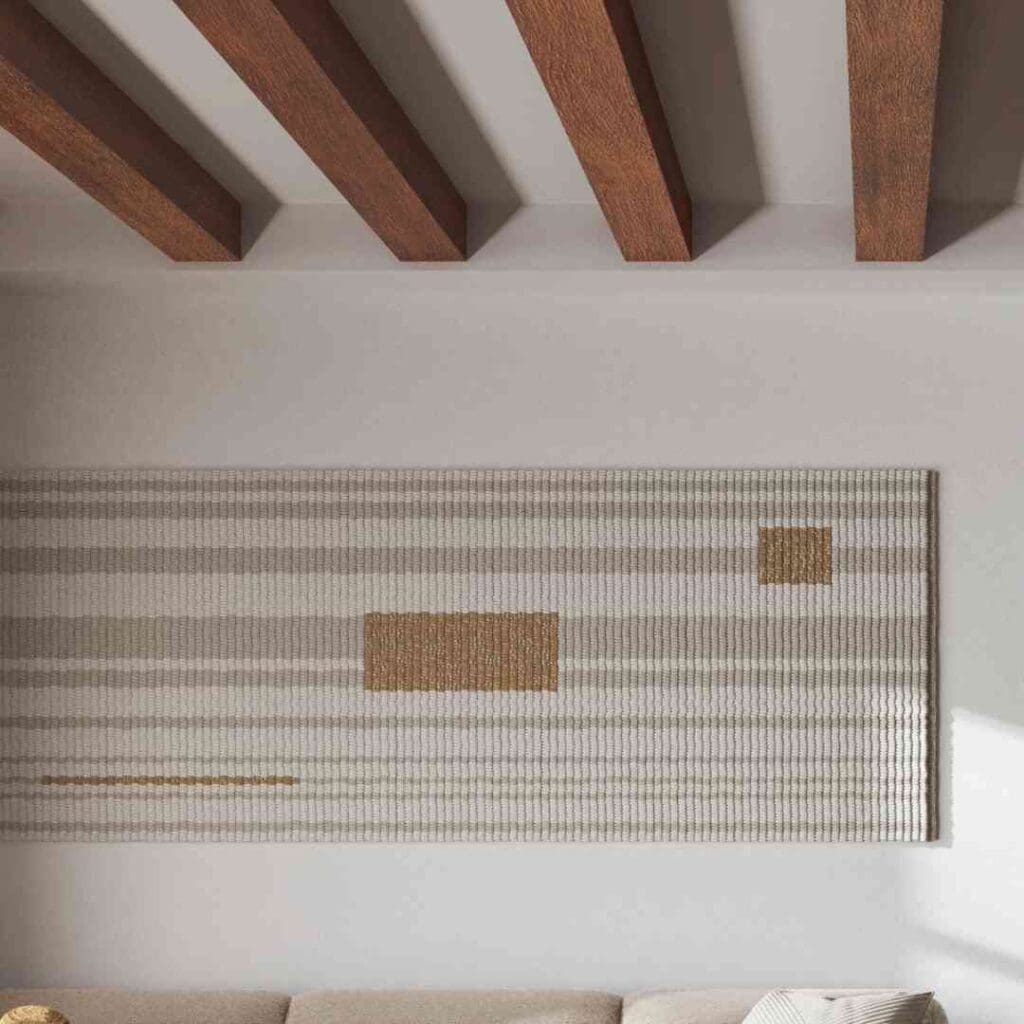
The textiles you have in your home should also be cozy and comfortable. The Japandi’s style is about comfort and coziness; you should carefully choose the throws for your sofa or the pillows on your couch to look and feel comfortable and cozy.
With the Japandi style, you want a home with an inviting atmosphere that makes people want to elope in the comfort of your sofa or chair.
We love the Japandi design and how it is a trend that emphasizes cozy textures in your design.
Neutral Colors Help Define Japandi Interior Design
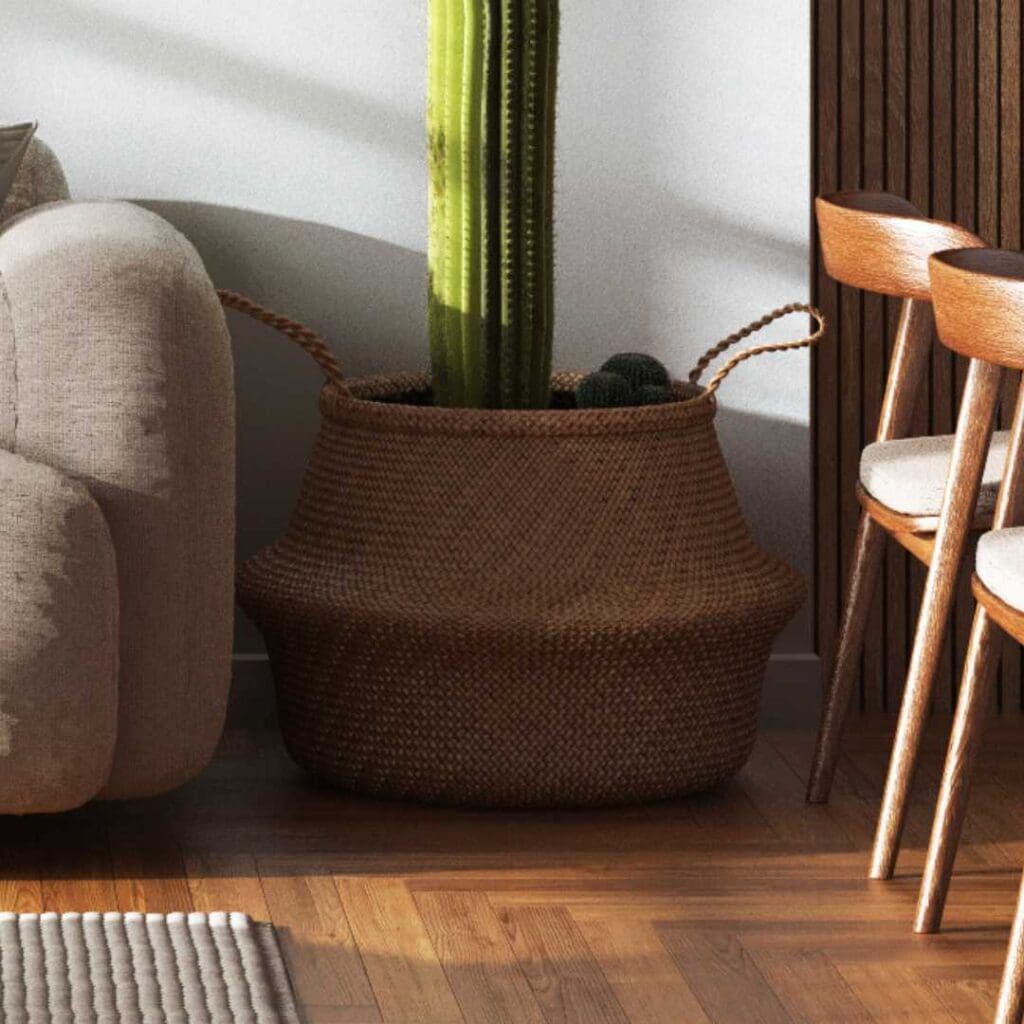
The Japandi style uses a lot of neutral colors. In many cases, the rooms can use white as one of the primary colors. You may find that the walls are white walls and white furniture; it looks at everything is white except some natural elements thrown in
Other colors would be softer colors such as beige, grays, eggshells, alabaster, and even some undertones of pink, soft greens, and different softer colors.
We love neutral colors; with neutral colors, you never get tired of the colors; this trend will last a long time.
Simplicity In The Patterns With Japandi
For the Japandi trend, the patterns will be pretty straightforward. Everything from the fabric to the rugs is simple. If there is any wallpaper, it will be simple without overwhelming the room’s entire design.
One of the great things about many Japanese patterns, and even Scandinavian designs, is that they can be simple yet elegant. Many of the same patterns will have other elements of the Japandi style, and the patterns might be simple but not perfect.
We love many of the Japandi patterns and textures, and how many of these same textures are imperfect.
Imperfection Over Perfection For The Japandi Design
One of the other elements of the Japandi design is imperfection over perfection, especially for some furniture and accessory pieces. That is why you might find some furniture made out of recycled or reclaimed wood.
Things don’t need to be perfect to be beautiful. There can be real beauty in some natural imperfections.
We believe life is never perfect, so we love how the Japandi trend is about embracing the. Imperfections of life.
Choose Natural Lighting For Your Japandi Design
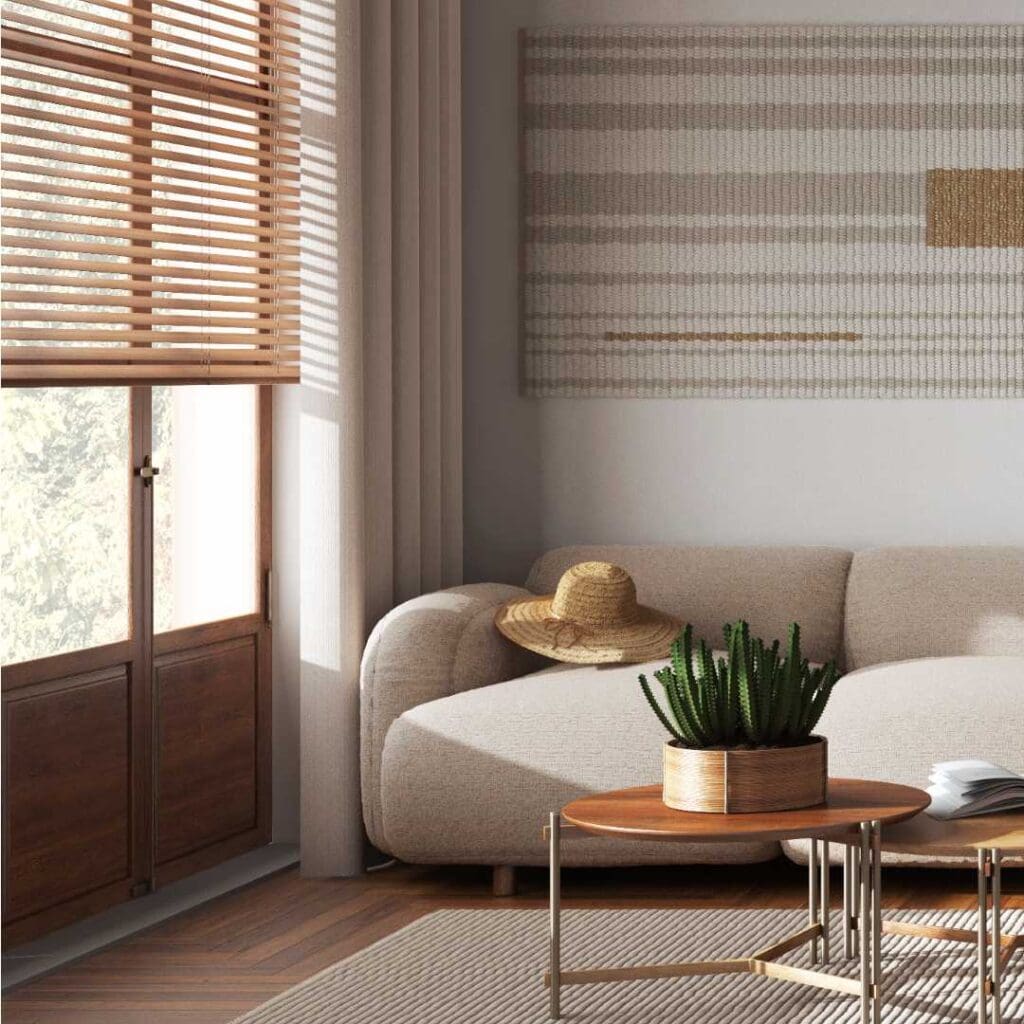
For the Japandi design, the critical element is natural light and allowing natural sunlight to come into the interior space.
Using things with natural light from window skylights, even doors can create a bright and airy space and feel. It also helps you connect with nature even during the colder winter months.
We are great believers in natural lighting; light in a home can make a difference in the overall look and design. We love how natural light is an essential element of the Japandi trend.
Japandi Use Some Japanese Accents
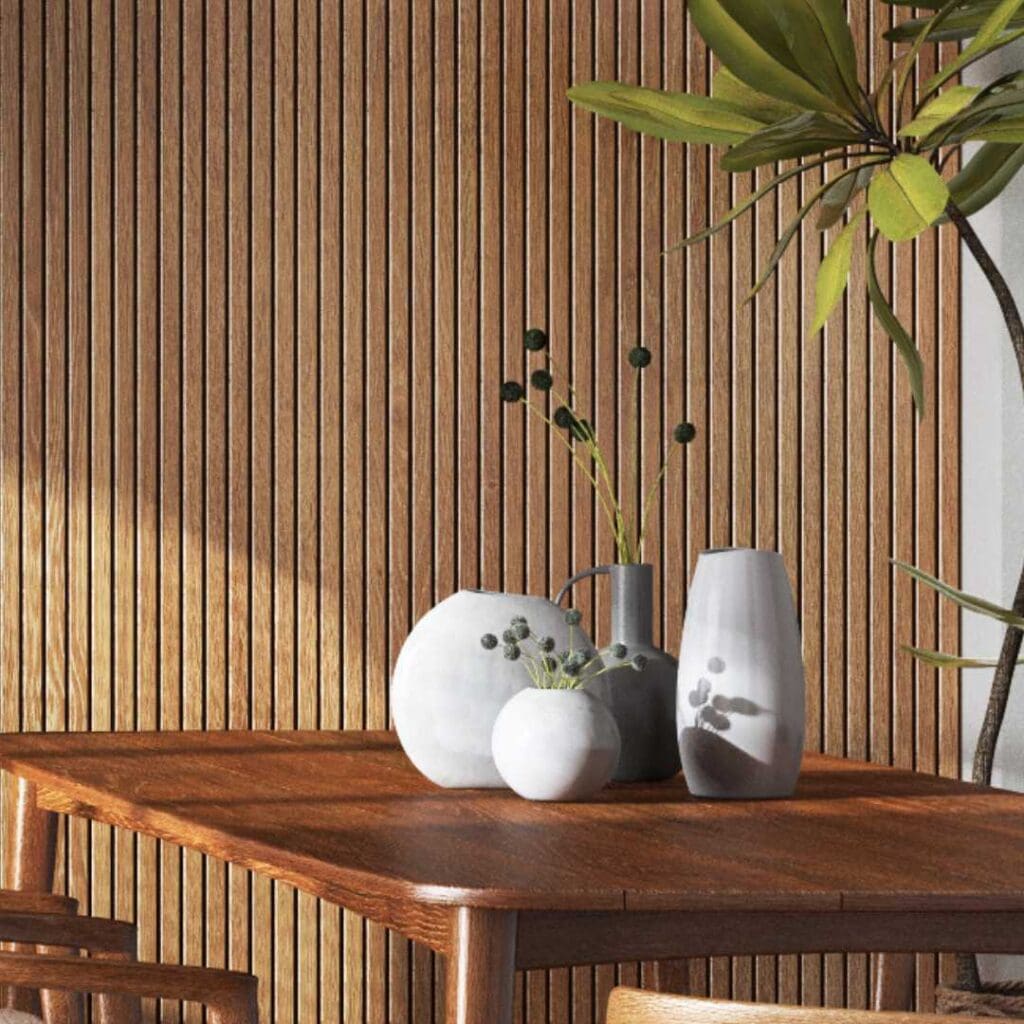
The Japandi interior trend incorporates some Japanese accents. Things like screen mats or even Japanese-style prints on cushions could help bring the entire style together.
We love the Japandi trend as unlike other contemporary designs, which can be overly chaotic or cluttered with many accessories, this style keeps things simple with a few statement pieces. Japandi is a versatile and timeless interior design look that is more than just a style but also a way of comfortable yet stylish living.
Japandi interior design is a style that has increased in popularity in recent years. Japandi creates a simple, elegant, and functional look by blending the best of Japanese and Scandinavian design.
If you want to incorporate Japandi into your home, keep these key 15 design elements in mind. Some of these include natural materials, subdued colors, minimalist furniture, and a focus on simplicity and functionality.
Contact us today to have Mondoro help you create, develop, and manufacture Japandi-inspired home decor and furniture products, click here to contact.
Find out more about how Mondoro can help you create, develop, and manufacture excellent home decor and furniture products – don’t hesitate to contact me, Anita. Check out my email by clicking here or become a part of our community and join our newsletter by clicking here.
Mondoro gives out a FREE Lookbook to anyone interested. You can receive a copy of our latest Lookbook by clicking here.
Listen to our Podcast called Global Trade Gal. You can find it on all major podcast platforms. Try out listening to one of our podcasts by clicking here.
Subscribe to our Mondoro Company Limited YouTube Channel with great videos and information by clicking here.
Related Content
Recycled Pine Furniture, What You Need to Know
Reclaimed and recycled wood may seem the same, but they are not precisely the same. Recycled wood is wood that would have otherwise been discarded or not used. Wood is a naturally sustainable material as it can be regrown and replaced. There are a variety of furniture shapes and styles that can be used to make recycled pine furniture.
You can discover more by reading Recycled Pine Furniture, What You Need to Know by clicking here.
How Do I Find an Overseas Manufacturer To Produce My Product Ideas?
Though it is not easy to find reliable overseas manufacturers, you can take some basic steps to find a dependable supplier. This process to locate this dependable manufacturer can include things such as finding a buying agent, attending trade shows, doing some online searches, talking to some trade organization, and getting a referral from someone from the industry.
You can read our blog on How Do I Find an Overseas Manufacturer to Produce my Product Ideas? by clicking here.
What Does “FSC Certified” Wood Mean?
FSC means the Forrest Stewardship Council, a nonprofit certification process to ensure that wood used for products is from a managed forest and source. The goal of the FSC is to stop illegal logging activities and certify that wood used for a product has reached the standard to be called FSC-certified wood.
You can learn more by reading our blog, What Does “FSC Certified” Wood Mean? by clicking here.

